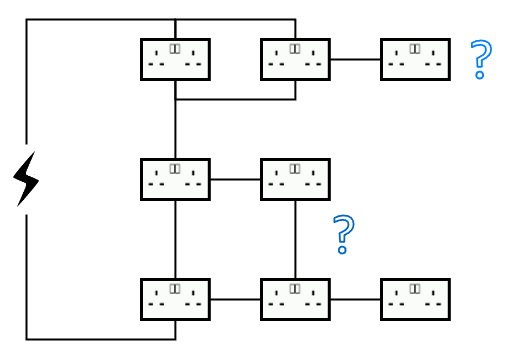I want to add an outdoor socket directly through a wall behind two internal sockets, so only a minor extension in terms of cabling distance. However, I also want to run a spur off that outdoor socket, so the first socket cannot itself be a spur.
My understanding is that, in the United Kingdom, almost all domestic mains electrical circuits are ring circuits. Ideally, every socket would be part of the ring but it is acceptable to add a single or double socket via a radial spur. It is not permitted for more than one socket to be powered by a spur, unless protected by a fuse control unit.
But if we are wiring a spur with a single 3-core cable, why not create a mini ring using two 3-core cables? Alternatively, why not add an entire secondary ring off the main ring?
(I haven't drawn it, but you could even question whether it's acceptable to use a 'grid' type design, connecting the socket in the middle directly to the one above it?)
As I have not seen this design anywhere, I'm assuming there are good reasons not to implement it. But what are those reasons? I find it odd that you could reduce direct connections between two sockets from two to one to ensure that there was only one ring, and that this would somehow be 'better'.
From the perspective of the cable capacity, you might argue that the points which connect the main ring to the mini or secondary ring create a bottleneck, but surely they are no worse than those at the distribution unit? From a regulatory perspective, perhaps adding cabling in this manner is likely to increase the total length beyond the permitted maximum - or make it difficult to determine whether a circuit will breach that maximum?
What is wrong with this circuit design:
- electrically (is it unsafe)?
- regulatorily (does it breach code / why)?



